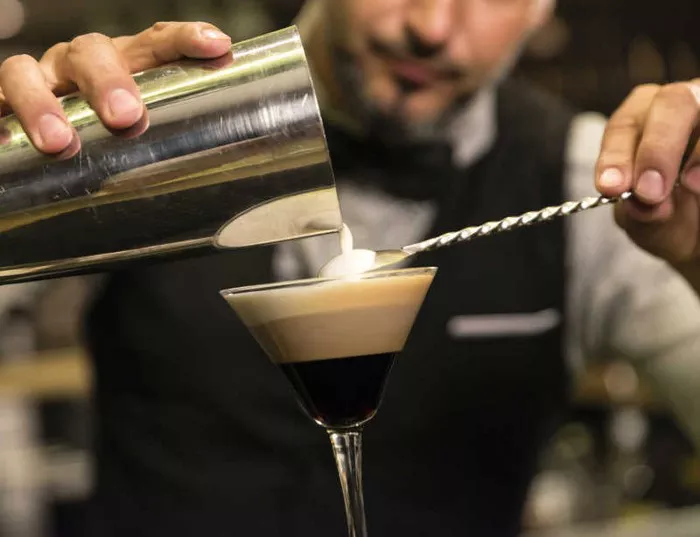There’s something truly satisfying about sipping a perfectly crafted cocktail. Whether you’re a seasoned mixologist or a casual home bartender, knowing how to make a good cocktail is a valuable skill. In this comprehensive guide, we’ll take you through the essential steps and techniques to ensure that every cocktail you create is a masterpiece.
1. Gather Your Tools and Ingredients
Before you start mixing, make sure you have the necessary tools and ingredients at your disposal. Here’s what you’ll need:
Tools:
Cocktail shaker or mixing glass
Jigger or measuring tools
Bar spoon
Strainer (Hawthorne or fine mesh)
Muddler (for certain cocktails)
Ice
Basic Ingredients:
Base spirit (e.g., vodka, gin, rum, tequila, whiskey)
Mixers (e.g., fruit juices, soda, tonic water)
Sweeteners (e.g., simple syrup, grenadine)
Flavor enhancers (e.g., bitters, liqueurs)
Fresh fruit or herbs (for garnish)
2. Choose the Right Glassware
Selecting the appropriate glassware is crucial for the presentation and enjoyment of your cocktail. Common options include:
Rocks glass: Ideal for cocktails served over ice.
Martini glass: Perfect for chilled, strained cocktails.
Highball glass: Used for tall, refreshing drinks.
Coupe glass: Great for classic cocktails like martinis and daiquiris.
3. Measure Your Ingredients Precisely
Consistency is key in mixology. Use a jigger or measuring tools to ensure you’re adding the right amount of each ingredient. This prevents over-pouring and maintains the cocktail’s balance.
4. Balance the Elements
Every great cocktail achieves a balance of flavors. Keep these elements in mind:
Sour: Typically from citrus juices like lemon or lime.
Sweet: Added through syrups, liqueurs, or fruit juices.
Strong: The base spirit provides the alcohol content.
Aromatic: Bitters or herbs can add complexity and aroma.
5. Shake or Stir with Precision
The choice between shaking and stirring depends on the cocktail:
Shaking: Use a cocktail shaker with ice for cocktails with fruit juices or dairy. Shake vigorously for about 10-15 seconds to chill and aerate the mix.
Stirring: For clear cocktails like martinis or Manhattan, stir gently in a mixing glass with ice to chill without excessive dilution.
6. Strain and Serve
Use the appropriate strainer (Hawthorne for shaken cocktails, fine mesh for stirred) to strain your cocktail into the chosen glass. If the recipe calls for ice, add it to the glass before pouring.
7. Garnish with Flair
The final touch is the garnish. A citrus twist, maraschino cherry, or fresh herb can enhance the aroma and presentation. Be creative but ensure it complements the cocktail’s flavor.
8. Experiment and Have Fun
Mixology is both an art and a science, and experimentation is encouraged. Don’t be afraid to tweak recipes or invent your own. Taste as you go to adjust flavors to your liking.
9. Practice Responsible Drinking
Lastly, always enjoy cocktails responsibly. Know your limits and never drink and drive.
Now that you’ve mastered the art of making a good cocktail, it’s time to impress your guests or enjoy a well-deserved drink yourself. Cheers to the world of mixology and the delicious creations that await you!
FAQs related to the topic “How to Make a Good Cocktail”:
1. What’s the secret to balancing flavors in a cocktail?
Achieving the perfect balance of flavors in a cocktail requires experimentation and tasting as you go. Start with the basic sour-sweet-strong-aromatic elements and adjust to your taste.
2. Are there any essential tips for garnishing cocktails?
Garnishing adds visual appeal and aroma. Be sure to use fresh garnishes, and consider the cocktail’s flavor profile when choosing garnishes. Citrus twists, herbs, and even edible flowers can elevate the presentation.
3. Can you explain the importance of using fresh ingredients in cocktails?
Fresh ingredients, such as freshly squeezed juices, herbs, and fruits, are crucial for achieving the best flavor and aroma in cocktails. They provide a natural brightness and depth of flavor that canned or bottled ingredients can’t match.
4. What’s the difference between shaken and stirred cocktails, and when should I choose one over the other?
Shaking cocktails with fruit juices or dairy creates a frothy texture and thoroughly chills the drink. Stirring is preferred for clear cocktails like martinis, as it prevents over-dilution and maintains clarity.
5. How do I properly muddle ingredients in a cocktail?
Muddling involves gently crushing ingredients like fruits, herbs, or sugar to release their flavors. Use a muddler and apply gentle pressure, avoiding over-muddling, which can make the cocktail bitter.
6. Can you recommend some classic cocktails for beginners to start with?
Classic cocktails like the Margarita, Mojito, and Old Fashioned are excellent choices for beginners due to their straightforward recipes and widely loved flavors.
7. What are some common mistakes to avoid when making cocktails at home?
Common mistakes include over-pouring, using low-quality ingredients, not balancing flavors, and not properly chilling or diluting the cocktail.
8. Are there any alcohol-free or mocktail alternatives for those who don’t drink alcohol?
Yes, there are plenty of alcohol-free mocktail recipes available. They use non-alcoholic substitutes for the base spirit and often include fresh juices, syrups, and soda to create flavorful and enjoyable drinks.
9. How can I create signature cocktails for special occasions or themed parties?
Creating signature cocktails involves experimenting with flavors that match the occasion or theme. Consider the colors, ingredients, and presentation that align with the event.
10. What are some online resources or books for those looking to delve deeper into mixology?
There are numerous websites, blogs, and books dedicated to mixology and cocktail recipes. Some well-known resources include cocktail books by expert mixologists and websites with extensive cocktail libraries.


